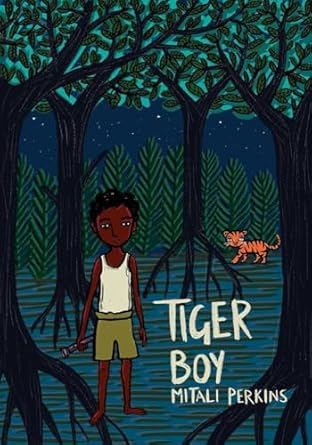Tiger Boy by Mitali Perkins is a heartfelt middle-grade novel set in the Sundarbans, a lush mangrove region spanning India and Bangladesh. Geared toward readers aged 8 to 12, the story follows Neel, a determined boy who discovers a tiger cub separated from its mother. When poachers threaten the cub’s safety, Neel risks everything to protect it, navigating the challenges of his impoverished village and his family’s hopes for his academic future. Perkins weaves themes of environmental conservation, cultural identity, and courage into a narrative that balances adventure with emotional depth. The story’s vivid setting and relatable protagonist invite readers to explore complex issues through Neel’s eyes, making it both accessible and thought-provoking for young audiences. Educators will find Tiger Boy particularly valuable for its supportive reading features. The text employs straightforward sentence structures and concise paragraphs, allowing reluctant readers to engage without feeling overwhelmed. Perkins integrates Bengali cultural references and regional dialects in ways that are contextualized naturally, avoiding confusion for language learners. While the book does not include illustrations, its rich descriptive language paints clear mental images of the Sundarbans’ wildlife and landscapes, aiding comprehension for visual learners. Scenes where Neel sketches animals in his notebook or problem-solves with his sister offer relatable anchors for students to connect with the story. The novel’s pacing—short chapters with moments of suspense—keeps readers invested, and its themes of perseverance and community align well with classroom discussions about global citizenship. Recognized with a South Asia Book Award honor, Tiger Boy stands out as a culturally resonant, emotionally engaging choice for educators seeking to diversify their shelves with stories that are both locally specific and universally meaningful. Its blend of accessible language, ethical dilemmas, and heart makes it a compelling tool for fostering empathy and critical thinking in young readers.

